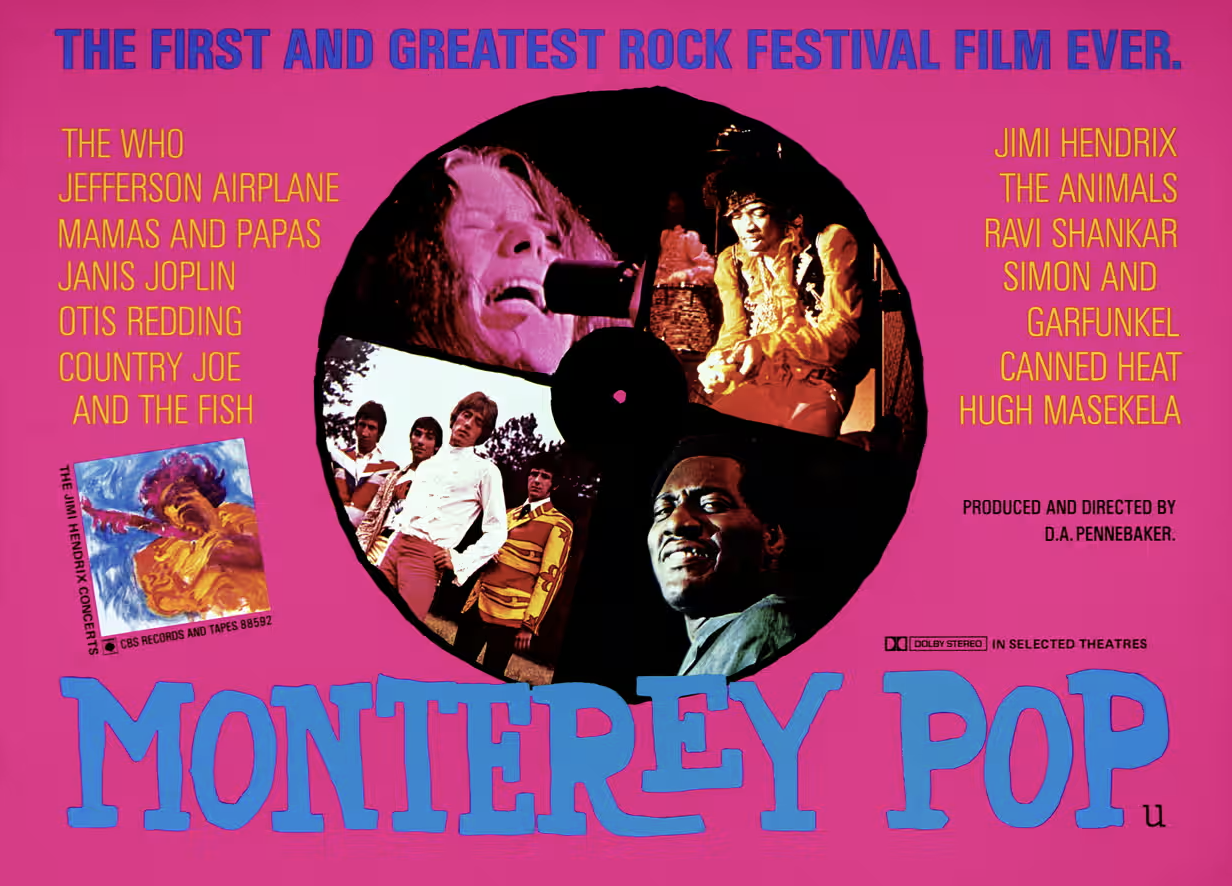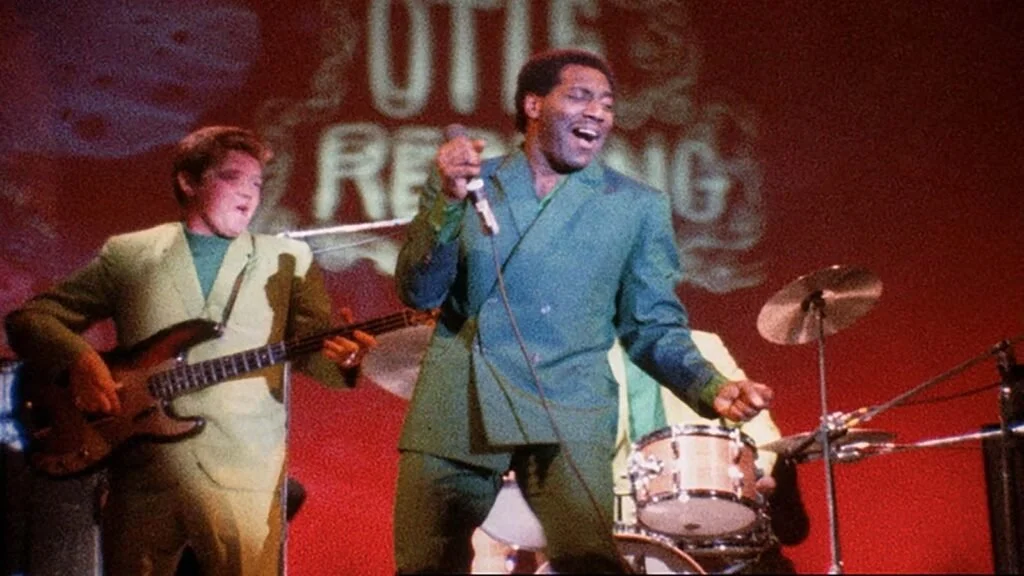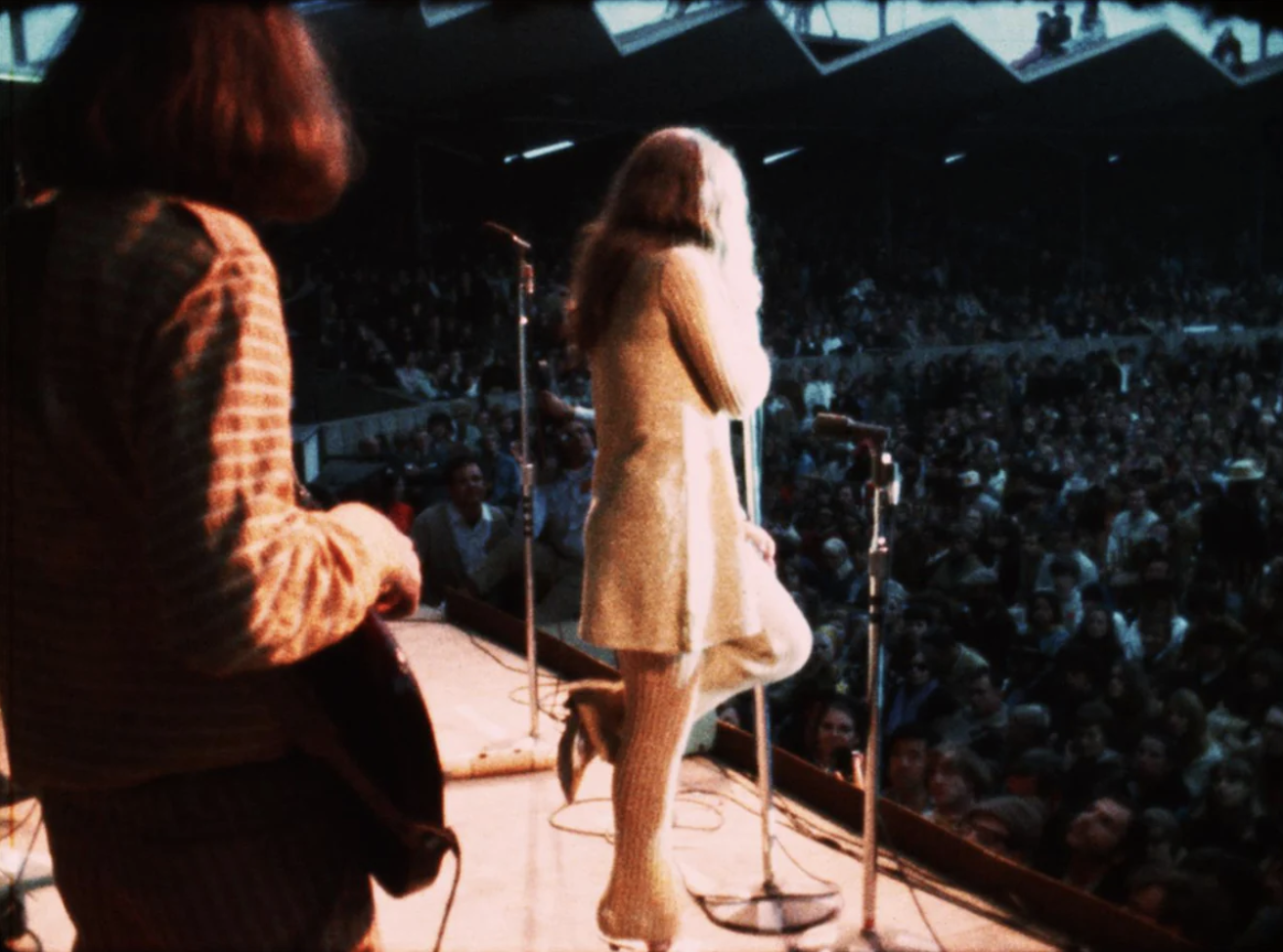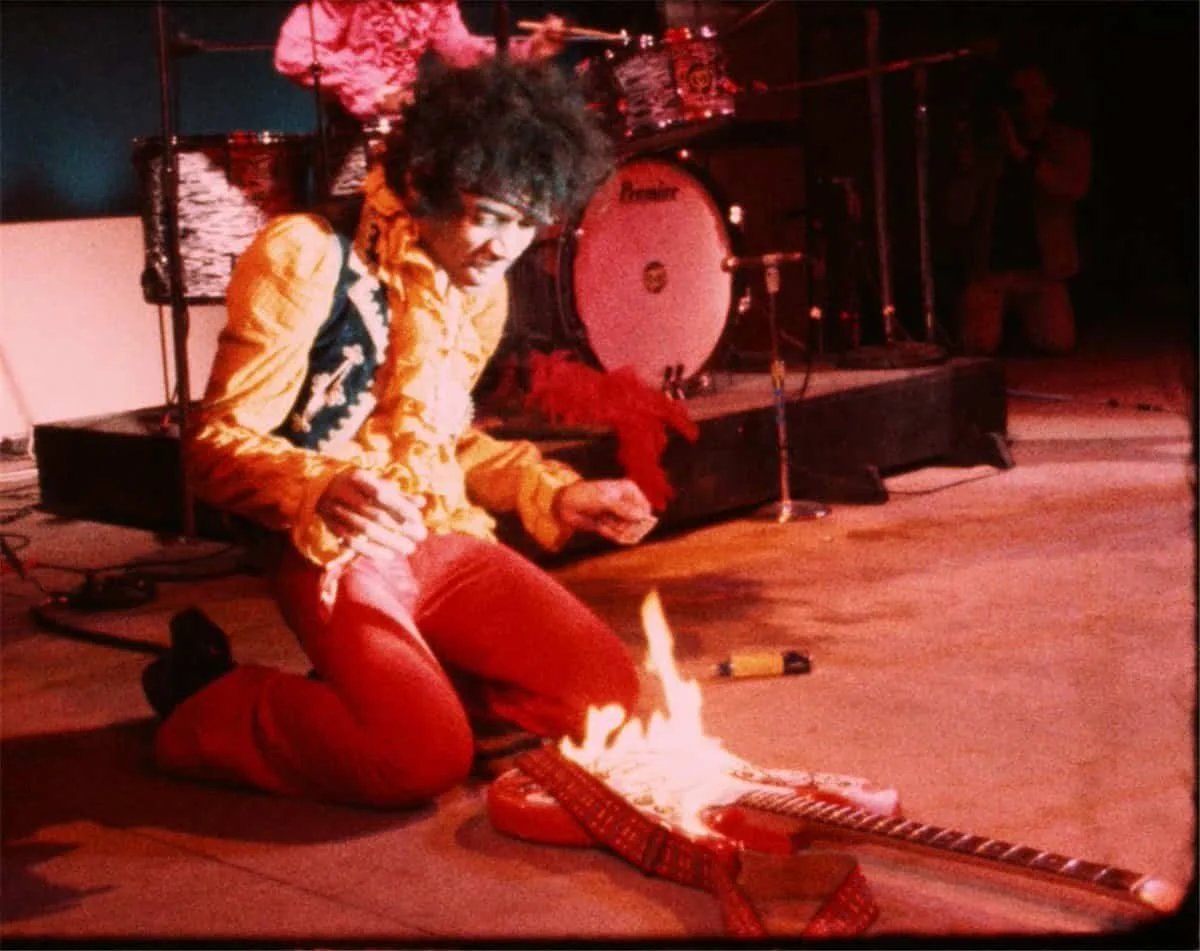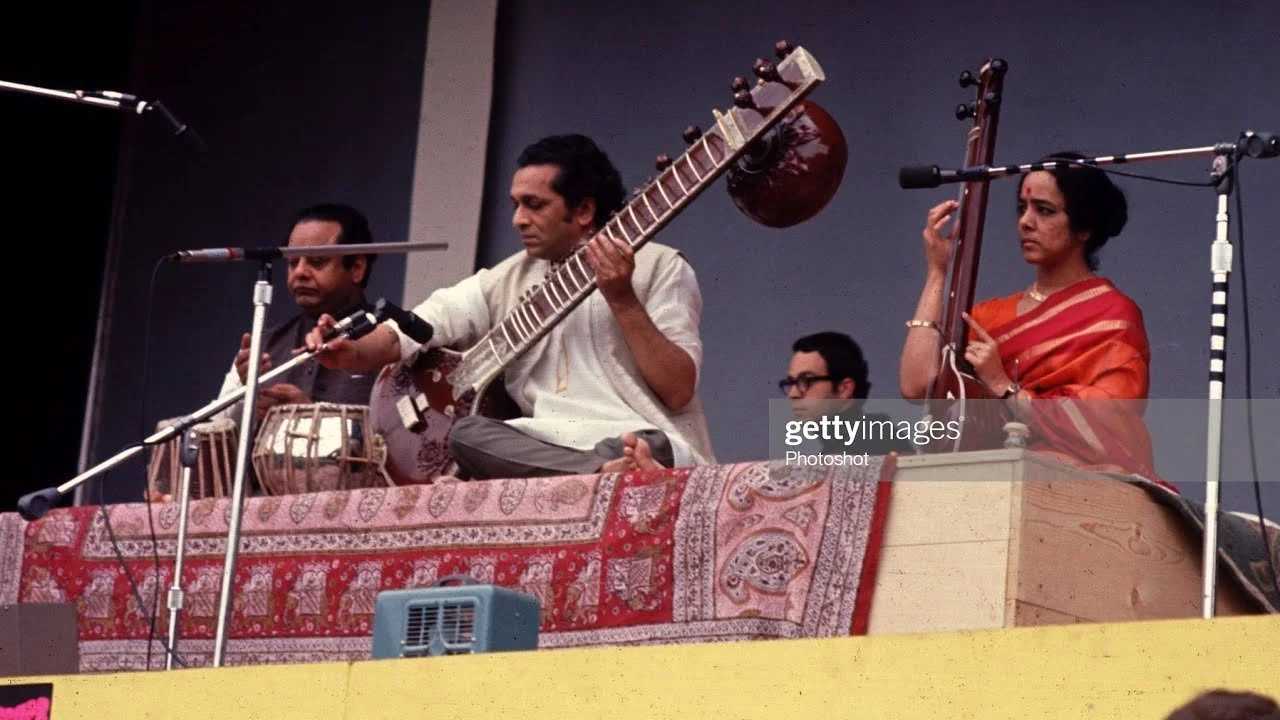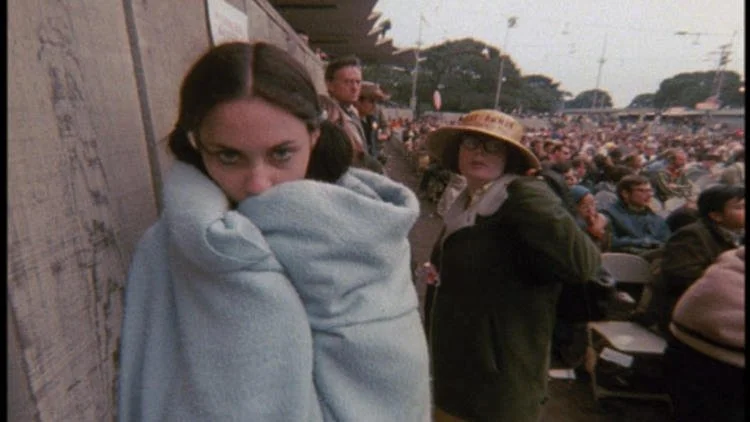WHEN THE MUSIC TELLS THE STORY: Monterey Pop (1968, dir by D.A. Pennebaker, 80mns, USA)
Documentary movies are elusive things. Docs about music festivals maybe even more so.
Otis Redding brings the soul…
A doc like D.A. Pennebaker's MONTEREY POP captures amazing performances at the 1967 Monterey Pop festival from 1960's luminaries like The Mamas & the Papas, Jimi Hendrix, The Who, Janis Joplin, Jefferson Airplane, Ravi Shankar and others. And you do, in its most transcendent moments, feel like you are experiencing it as the audience experienced it.
At the same time, documentaries are creative works as much defined by what gets left out as what gets put in. We are getting a curated experience. And there are other experiences, stories of the same event that never got photographed or got left on the cutting room floor.
This writer only writes this because it's tempting to look at MONTEREY POP, a towering example of a great doc about music, as the definitive word on the Summer of Love, 1967, etc. But of course it's not. At best, it's a microcosmic snapshot you put in the corner of your mirror in your apartment bathroom to remind you of a bigger indefinable thing.
Janis Joplin with a set of pipes that blew Mama Cass away…
The movie is an example of Pennebaker's "Direct Cinema" approach of working to let the footage, subjects speak for themselves. Here, music numbers are intercut with footage of the audience before, during, after the performances. We see (mostly) young people digging the music, digging each other, camping out, smoking, creating art, carting their babies on their backs, making out in sleeping bags.
Hippies, beatniks, peaceniks, musicians, befuddled cops. It's all here.
Here also are iconic moments caught on film. Pete Townsend thrashes his guitar on stage during a wild Who rendition of "My Generation" as Keith Moon holds the beat down like a maniac on the drums.
The Who played just two acts before Hendrix. Pete Townsend smashing his guitar would have been the unpredictable highlight of the fest if Jimi didn’t come on two acts later and…
Maybe most iconic of all, Jimi Hendrix lights fire to his guitar to end a sexually charged cover of "Wild Thing". It's Hendrix especially who reminds you that there was a time when rock and roll was "dangerous". In the best possible way.
As a music lover, you see a young Prince watching Jimi here and saying "Yeah. I'm gonna top that one day..."
The movie is also an unintentional comment on mortality. Jimi and Janis Joplin, so vital and masterful with their music here, are just three years from their own deaths (at 27, so they're 24 here and KILLING IT). They don't know. The audience doesn't know. We know...
The most iconic shot from MONTEREY POP?
The fleeting incandescence and randomness of the life force...
The movie ends with a crazy long Ravi Shankar performance of Indian music on the sitar, drums, etc. The audience is stunned, blissed out, INTO IT. And you go into a bit of a trance yourself letting that sitar and timeless music speak to your soul.
Ravi Shankar’s set closes out the movie with possibly the longest scene devoted to a performer as he and his group do an uninterrupted timeless Indian jam.
Movies like these are dangerous for another reason. In showing us a canonical moment of recent history-the United States in 1967-the temptation is to want to idolize it. Contextualize it as a moment that will never come again. To want to time travel and live in that moment for a day free from the gnarled horrific indeterminate anxieties of today when the world and our own country seem on fire in a way where the center won't hold.
And yet, 1967 was a horrible fraught time. Vietnam. Tens of thousands of deaths. Civil Rights tensions. Political assassinations. Loss of faith in political leaders.
Music. Art. Culture. Existence. It's all conflict. At its best and its worst.
MONTEREY POP captures a moment. And sometimes moments are all we've got.
Craig Hammill is the founder.programmer of Secret Movie Club
The shots of the audience are as dynamic as the shots of the performers in the doc.

